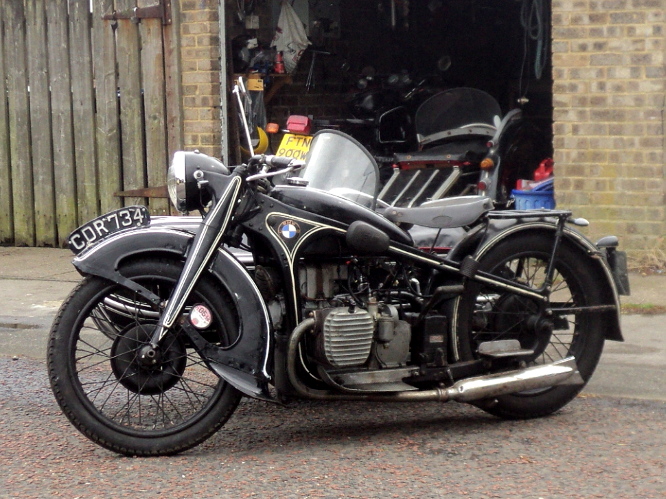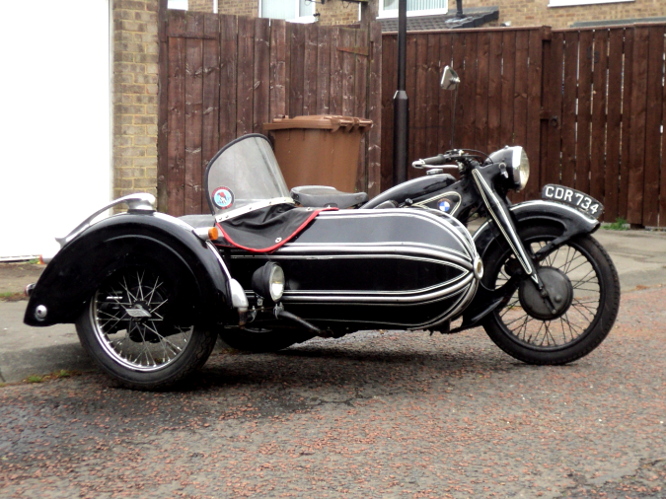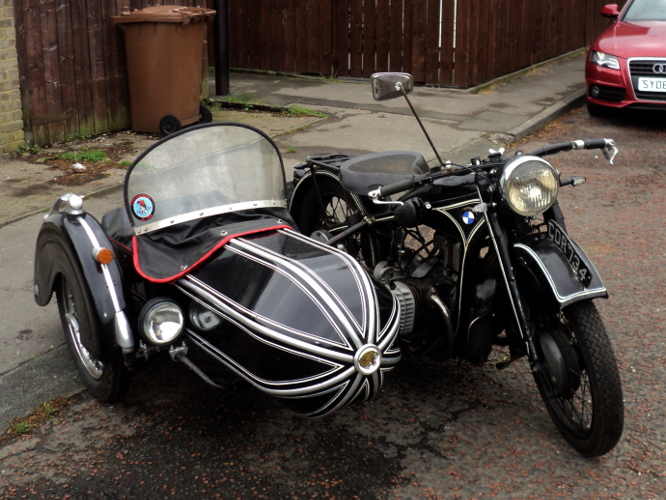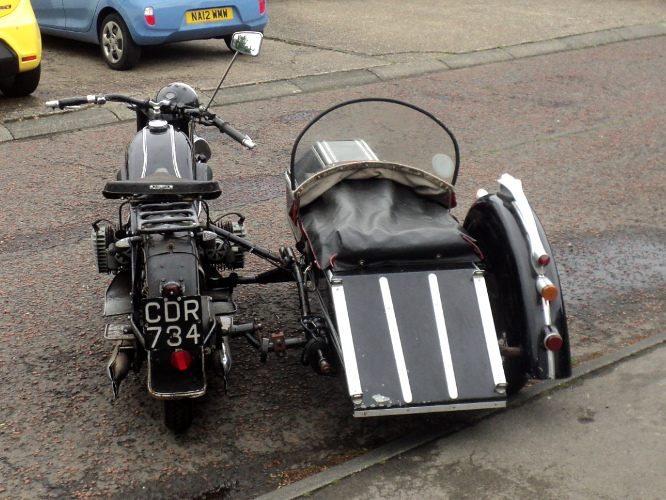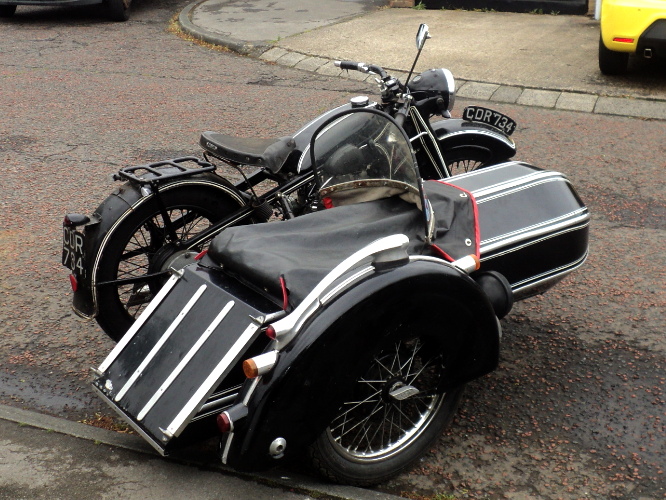Went out for a decent run on the R12 combo on Sunday, around 70 miles all told.
The sidecar chassis I’m using on her is the same one I took off her some 5 years ago when I started working on the Panther and needed the space in the garage.
When I put it back on I just bolted everything up “as was”, assuming the fittings had not been moved so, although Steib fittings are reputed to be good for this trick, I was a bit apprehensive first time out.
I’d taken her out first for a couple of miles to make sure there was nothing drastically wrong but this was to be the first real test of things.
So it was a case of load up, dogs in the sidecar, fire the bike up and away we go!.
All outfits tend to flutter their bars as you pull away, once you are used to driving an outfit you only notice this if it is excessive.
Use of a steering damper limits this but where your damper is the old-fashioned friction type it can stiffen up the steering generally.
I had my damper set at 3 clicks from off (one click gives JUST enough rub to keep the damper plates clear of rust when running as a solo) and did not notice any flutter worth commenting on so that was a good sign to start with.
Next was how stable the steering was. The R12 has a hand operated gear-change so you need to remove your right hand from the bars to change gear. If there’s any instability in the steering this is where it will show up and it didn’t, no wobble detected.
Now an outfit is a peculiar vehicle, it is a twin-track machine but is driven and braked on one track only. This means that, when the outfit is properly set up, on acceleration the bike tends to pull towards the sidecar and on braking the sidecar tends to pull towards the bike so that when on the open road much of your steering is done with your throttle. Much of the “Black Art” of sidecar riding is in getting to know how to use this.
If the set-up is incorrect then the outfit will tend to always pull to one side or the other. So, how was the R12?.
Answer is “Just about right!”. She steered nicely on the throttle and also ran straight when on a steady gas, it only needing one finger on the bars to hold her straight, always a good rule of thumb!.
After some 20 miles I took stock a bit, the R12 is lower built than the Panther, this results in the bars being lower than I’m used to with the Pussy and a feeling that I’d prefer them to come about a inch and a half further back and the same higher. I don’t remember this feeling when I was riding her before so it’s just going to be use.
The R12 has footboards whereas the Pussy has footrests, in theory there is greater choice of position on the R12, but it’s a boxer twin, you’ve a cylinder complete with carburetter in front of your foot so in fact there’s very little difference.
Another difference is that the R12 has telescopic forks in comparison to the Webb girder fork on the Puss.
Telescopic forks are at a disadvantage for sidecar work compared with either a good girder fork or a link fork, they have an inherent flexibility which does not affect handling as a solo machine but does affect a sidecar outfit, however those on the R12 have only a limited range of movement available, and given the limited performamce of the old lady this is acceptable in this case.
How did she perform?. Well remember the old girl is 80 years old and what was considered good back then is slow now. I have a Sigma electronic speedo fitted to her which has been set up on a measured half-mile nearby. On a major road along the level I was comfortably holding an indicated 41 to 44 mph. On hills this was dropping back to around 38 to 39 mph.
I was seldom over about half-throttle so there was power in hand, and one thing you rapidly learn with an outfit is to always have that “bit in reserve”.
Performance is comparable to that of the Pussy on chair, a difference being however that while the R12 is pulling sidecar gearing the Pussy was left to pull her normal solo gearing.
This means that under ideal conditions the Pussy will be faster on sidecar, she will tend to “bog down” more, requiring more frequent use of the gearbox and dependance on the intermediate ratios.
Conclusions are that I’ll soon get used to the R12 outfit again, that what is said about Steib fittings not loosing their alignment when the sidecar is taken off the bike is true, and that as I discovered when manhandling the two different chassis around off the bikes that the Steib chassis is considerably lighter then the Watsonian!.
Reason for this will be that the Steib is welded construction while the Watsonian is a hearth brazed fabrication with heavy forged lugs and straight tubes giving the Steib the same advantage the Featherbed Norton frame had over its rivals.

